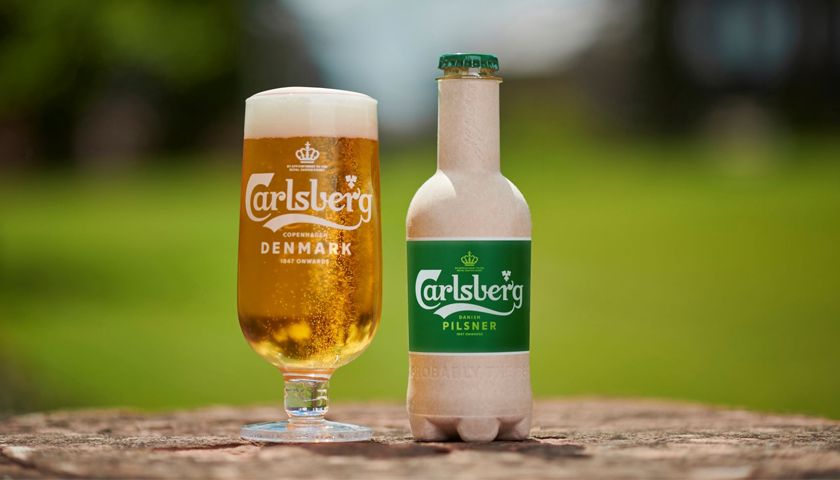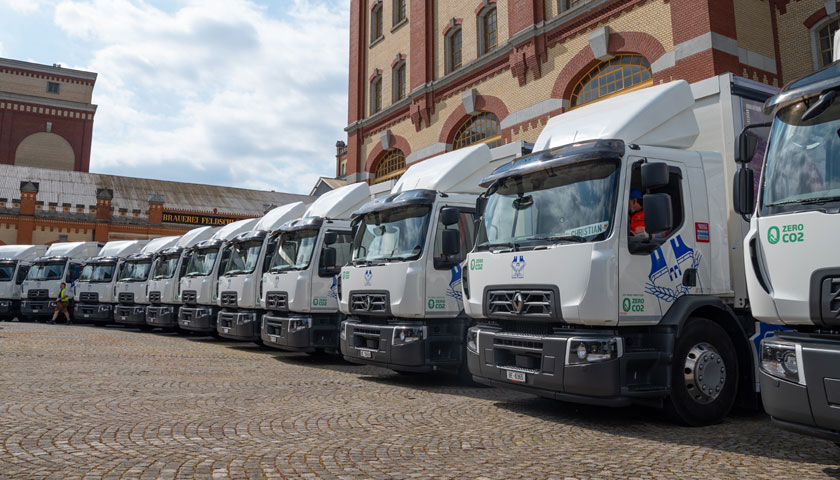The latest assessment of Carlsberg Group’s value chain carbon emissions confirms that Carlsberg has exceeded its 2022 target for reducing carbon emissions across the full value chain, from growing barley in the field to recycling of bottles and cans. Having targeted a 15% reduction versus 2015, it has since delivered a 16% reduction.
Lower-carbon solutions in malting processes. Elimination of coal at Carlsberg’s breweries. Lower-carbon packaging. Reduced energy consumption by fridges at bars and restaurants. These are some of the main drivers that have enabled Carlsberg Group to cut carbon emissions across the entire value chain between 2015 and 2022. Now, Carlsberg Group can confirm that it has achieved a 16% reduction in relative value chain emissions per hectolitre of beer produced (kg CO2e/hl) after finalising the new assessment which has been conducted in partnership with the independent consultancy Carbon Trust.
Jacob Aarup-Andersen, CEO of Carlsberg Group, says:
“I am very pleased to see that Carlsberg is delivering on its commitments to cut carbon emissions. As the incoming CEO my ambition is to drive progress and with these solid results at the 2022 milestone, we are starting with a strong foot forward as we continue the decarbonisation journey towards 2030 and 2040. We still have a long way to go, especially in areas such as agriculture and packaging – within which we have committed to specific targets more recently. Delivering on these new targets is not going to be easy, but our success thus far gives me great confidence in our ability to follow through with concrete actions and results.”
In absolute terms, the Carlsberg Group emits roughly 5.5 million tonnes of carbon (CO2e) through its entire value chain, and this absolute total has remained stable since 2015 (with a slight absolute reduction) while the business continued to grow. In relative terms the Carlsberg reduced emissions from 60 kg CO2e/hl in 2015 to 50 kg CO2e/hl in 2022.
Gaining momentum towards ZERO
All major steps of Carlsberg Group’s value chain contribute to the emissions reduction. Within agriculture and processing a 17% reduction has been achieved. At Carlsberg’s breweries a 41%[1] reduction has been achieved, and within packaging, distribution and cooling emissions have been reduced by 8%, 4%, and 19% respectively.
Victor Shevtsov, EVP Integrated Supply Chain, says:
“I am very proud of the progress we have made towards a ZERO Carbon Footprint by reducing our emissions in line with our promises. When we launched our Together Towards ZERO programme in 2017, we were among the first to introduce science-based climate targets aligned with the Paris Agreement on Climate Change. Fast forward to just a few years later, and we are now part of a greater movement of companies that have set ambitious targets to decarbonise their operations and their value chains. I am thrilled to see colleagues and suppliers reducing our joint impact every day – we are gaining momentum towards ZERO, together with our value chain partners and industry peers.”
Carlsberg Group has achieved relative emissions reductions in all regions. In Asia relative emissions were reduced by 21%, in Western Europe relative emissions were reduced by 17%, and in Central and Eastern Europe relative emissions were reduced by 12%.
Facts and figures
Overview: Emissions reductions across the value chain
- Within agriculture and processing a 17% reduction has been achieved, where lower-carbon solutions in malting processes have been a major progress driver, while increased usage of rice and sugars added carbon intensity.
- At the breweries a 41%[2] reduction has been achieved, driven by the elimination of coal, increased energy efficiency and use of renewable electricity, and innovative solutions – such as the extraction of biogas from on-site wastewater treatment plants, enabling brewery operations to use thermal energy that is renewable and circular.
- Packaging emissions have been reduced by 8%, driven by cuts to carbon intensity across all packaging types and improved recycling rates for PET bottles and aluminium cans; progress has been counteracted by the increased shared of cans in the overall packaging mix – thereby eroding the share held by reusable glass bottles which are comparably less carbon intensive.
- Distribution emissions have been reduced by 4%, driven primarily by efficiency improvements, and supported by marginal improvements from electrification and reduced business travel.
- Finally, emissions from cooling have been reduced by 19%, achieved with cuts to energy consumption by fridges and beer dispense equipment through, for example, the use of energy management devices and the decarbonisation of electricity grid mixes.
Overview: Current value chain emissions across value chain

Overview: Emission reductions in Carlsberg’s main regions
- Within Asia relative emissions were reduced by 21%, where more volume growth in this more carbon intensive region was counteracted by more aggressive reductions in emissions; the elimination of coal and lower-carbon solutions at breweries have been effective, cutting breweries’ share of regional emissions from 20% in 2015 to 10% in 2022.
- Within Western Europe relative emissions were reduced by 17%, aided by the sourcing of lower-carbon raw materials – in France, for example, the introduction of Responsible Barley for 1664 Blonde brews has cut the carbon footprint of malting barley by 20%.
- Within Central and Eastern Europe relative emissions were reduced by 12%, aided by notable improvements in the collection and recycling of packaging – in Lithuania, for example, the setup of a new deposit return scheme in 2016 enabled recycling rates to improve from below 50% to above 90% by the end of 2022.
Completing the status on the Together Towards ZERO targets
Carlsberg closes off all 2022 targets and has a holistic view of its performance towards a ZERO Carbon Footprint between 2015-2022, where it has:
- Entirely eliminated the use of coal at its breweries, achieving the target for ZERO coal
- Converted 98% of cooling equipment to low-climate-impact-cooling, mostly achieving the 100% target (where in Eastern European and Asian markets, some equipment contains coolants that are not aligned with low-climate-impact-cooling definitions)
- Sourced 92% of the electricity used at breweries from renewable sources, mostly achieving the 100% target (having been challenged by the lack of availability in Kazakhstan, Ukraine, Belarus and Azerbaijan)
- Reduced brewery carbon emissions by 57%[3], exceeding the 50% reduction target
- Reduced value chain carbon emissions by 16%, exceeding the 15% reduction target


